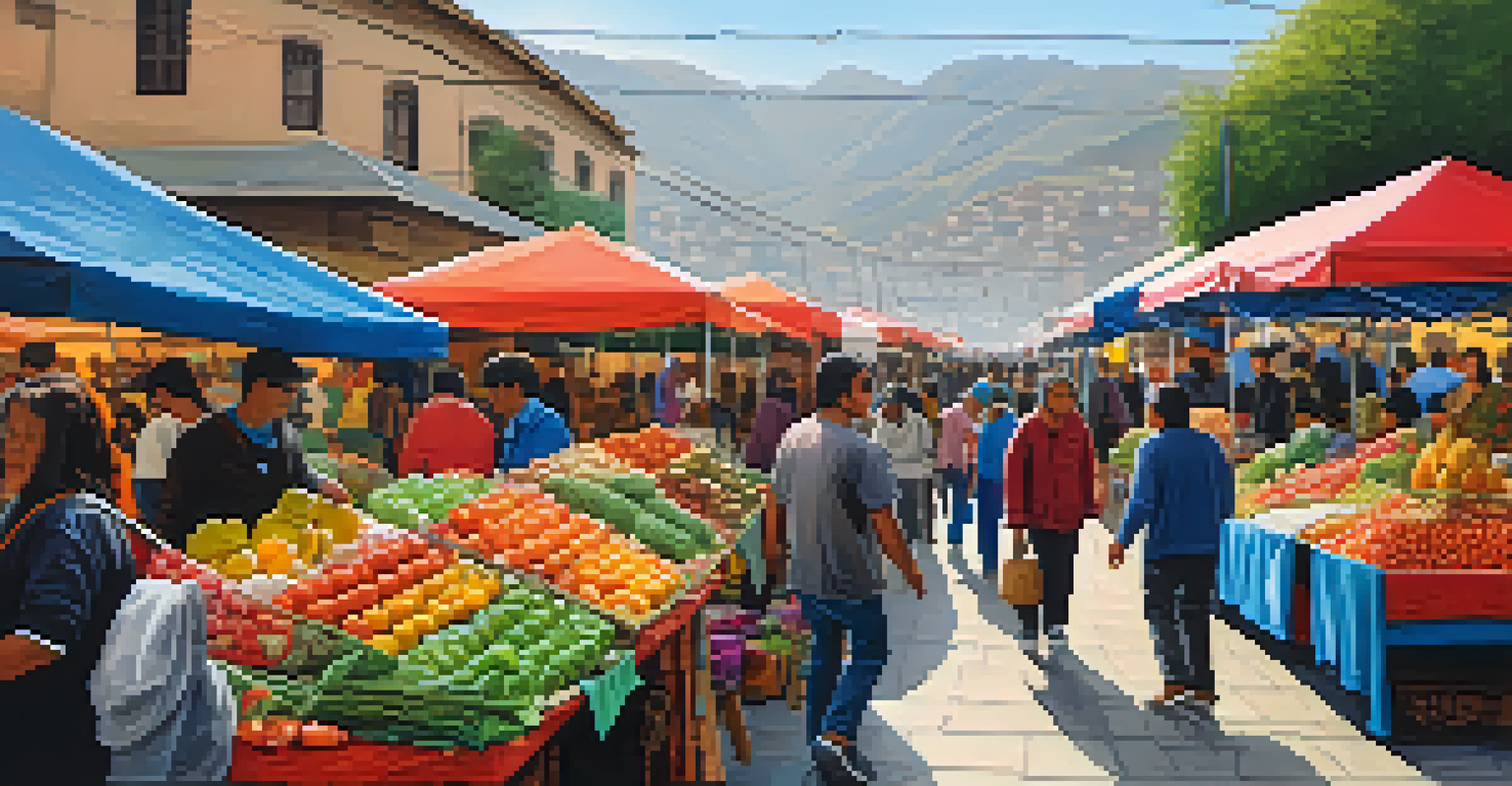How to Plan an Accessible Itinerary for Peru Travel

Understanding Accessibility Needs for Travelers in Peru
When planning a trip to Peru, it's essential to recognize the diverse accessibility needs of travelers. Accessibility can vary greatly depending on the region, so understanding your own requirements is the first step. Consider factors like mobility, visual impairments, or any other specific conditions that may affect your travel experience.
Traveling – it leaves you speechless, then turns you into a storyteller.
Peru is a country rich in history and culture, but it also presents unique challenges, such as cobblestone streets and varying terrain. By assessing your personal needs, you can prioritize destinations and activities that align with your comfort level. This way, you can enjoy the beauty of Peru without unnecessary stress.
Incorporating accessibility into your travel plans not only makes your trip more enjoyable but also sets a positive example for other travelers. Being mindful of accessibility encourages a more inclusive environment in tourism, which can lead to better services for everyone.
Researching Accessible Destinations in Peru
Peru is home to many breathtaking destinations, but not all are equally accessible. Start by researching locations known for their accessibility, such as Lima, Cusco, and the Sacred Valley. These areas often offer resources like wheelchair rentals, accessible tours, and accommodations that cater to various needs.

Consider reaching out to local travel agencies that specialize in accessible travel. They can provide valuable insights into which attractions prioritize accessibility and are equipped to accommodate your needs. For example, some guided tours in Cusco offer transportation options that are wheelchair-friendly.
Understand Accessibility Needs
Recognizing your unique accessibility requirements is the first step to enjoying a stress-free trip to Peru.
Also, take advantage of online forums and travel blogs where other travelers share their experiences. Reading personal anecdotes can help you gauge which places are truly accessible and which may pose challenges. The more informed you are, the better your itinerary will be.
Choosing Accessible Accommodations in Peru
Finding the right place to stay is crucial for any traveler, especially those with accessibility needs. Look for hotels and lodges that explicitly advertise their accessibility features. Many reputable accommodations in Peru offer amenities such as ramps, elevators, and accessible bathrooms to ensure your comfort.
The journey of a thousand miles begins with one step.
Don’t hesitate to call or email the accommodation directly to confirm their accessibility options. Sometimes, the information listed online may not fully represent the facilities available. This proactive approach can help avoid any surprises upon arrival and ensures your stay is as comfortable as possible.
Additionally, consider locations that are centrally located to minimize travel time. Staying in an area with easy access to attractions can make your trip more enjoyable, allowing you to explore without the stress of logistical challenges.
Creating an Accessible Transportation Plan
Transportation can be one of the most challenging aspects of traveling, especially in a country like Peru. When planning your itinerary, be sure to include accessible transportation options. Research local companies that provide wheelchair-friendly vehicles or those that accommodate other mobility needs.
Public transportation in Peru may not always be accessible, so consider private transfers for more convenience. Many tour operators offer shuttle services that cater to travelers with disabilities, ensuring you can navigate between destinations comfortably. This can save you time and energy during your trip.
Research Accessible Destinations
Identifying accessible locations like Lima and Cusco can enhance your travel experience by ensuring suitable accommodations and activities.
Additionally, familiarize yourself with the transportation infrastructure in the cities you'll be visiting. Some areas may have more accessible options than others, so understanding the local landscape will help you plan your routes effectively.
Planning Accessible Activities and Attractions
Peru boasts numerous attractions, from the ancient ruins of Machu Picchu to the vibrant streets of Cusco. However, not all activities are equally accessible. When planning your itinerary, prioritize attractions that are known for their accessibility features, such as guided tours designed for travelers with disabilities.
Many popular sites, like the Sacred Valley, offer accessible pathways and facilities. By choosing activities that cater to your needs, you can fully immerse yourself in the rich culture and history of Peru without facing unnecessary obstacles. Be sure to check in advance if certain attractions have accessibility accommodations.
Incorporating a mix of accessible outdoor experiences, such as scenic viewpoints or gentle hikes, can further enhance your trip. These activities not only provide a chance to enjoy Peru’s stunning landscapes but also allow for a more inclusive travel experience.
Packing Essentials for Accessible Travel in Peru
Packing wisely can make a significant difference in your travel experience. Ensure you have all necessary mobility aids, such as wheelchairs or walkers, along with any essential medical supplies. It's also a good idea to bring portable chargers for mobility devices, as access to power outlets may vary.
Consider packing lightweight clothing that can be easily layered, as the weather in Peru can change rapidly, especially in the mountains. Comfortable shoes are a must, too, as you'll want to be prepared for both urban and rural terrains. This way, you can explore comfortably without worrying about your attire.
Plan for Transportation and Activities
Creating a transportation plan that includes accessible options and prioritizing activities designed for travelers with disabilities will maximize your enjoyment in Peru.
Lastly, don't forget to include any personal items that enhance your accessibility, such as grab bars or cushions. Being prepared with the right gear will help you navigate your trip with confidence, ensuring you focus on enjoying all that Peru has to offer.
Connecting with Local Support and Resources
Once you arrive in Peru, connecting with local resources can enhance your travel experience. Seek out organizations that focus on accessibility and supportive services for travelers. They can provide valuable guidance, tips, and even connect you with local guides who specialize in accessible tours.
Engaging with the local community can also help you discover lesser-known accessible attractions and hidden gems. Many local guides are trained to accommodate various needs and can offer insights into the best ways to enjoy Peru without missing out on its wonders.

Additionally, social media platforms and travel groups can be great resources for real-time advice and support. By reaching out, you can gain firsthand knowledge that can make your trip smoother and more enjoyable.
Enjoying Your Accessible Journey Through Peru
Traveling in Peru can be a fulfilling and enriching experience, even for those with accessibility needs. By taking the time to plan your itinerary carefully, you can ensure a smooth and enjoyable journey. Remember to stay flexible and open to new experiences, as travel often comes with unexpected surprises.
Celebrate each achievement, whether it’s visiting a landmark, trying local cuisine, or simply enjoying the vibrant culture. These moments will contribute to lasting memories, making your travel experience truly worthwhile. It’s all about embracing the journey and the beautiful destinations along the way.
Ultimately, an accessible trip to Peru is not just about overcoming challenges; it’s about discovering the joy of exploration. With the right planning and mindset, you can create a remarkable adventure that highlights the beauty and diversity of this incredible country.